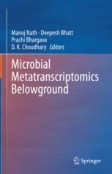Search
Search Results
-
Chemical Signal Dissemination Through Infochemicals
Every species has its own way of communication with diverse range of complexity that is relatively simplified in case of higher organisms while...
-
Nonlethal Effects of Predation: The Presence of Insectivorous Birds (Parus major) Affects The Behavior and Level of Stress in Locusts (Schistocerca gregaria)
Insect exposure to their predators can affect individuals and community processes, through direct consumption or nonlethal effects. However, the...

-
Responses to predation risk cues and alarm pheromones affect plant virus transmission by an aphid vector
Herbivores assess predation risk in their environment by identifying visual, chemical, and tactile predator cues. Detection of predator cues can...

-
Dangerous visions: a review of visual antipredator strategies in spiders
Many animals use visual traits as a predator defence. Understanding these visual traits from the perspective of predators is critical in generating...

-
Smelling the Basis of Social Connectedness: Chemosensory Communication in Humans
Humans have highly developed social and olfactory competencies. It is the aim of this review to summarize the empirical evidence and theoretical...
-
Specific Antipredator Response of Leopard Geckos (Eublepharis macularius) to the Smell of Snake Exuvia
This study aimed to establish a new bioassay for the chemosensory discrimination of snake predators by leopard geckos, Eublepharis macularius. It...
-
Body size in Batesian mimicry
A variety of traits is available for predators to distinguish unpalatable prey from palatable Batesian mimics. Among them, body size has received...
-
Non-consumptive effects in fish predator–prey interactions on coral reefs
Predator–prey interactions are critical in ecological communities, but it is increasingly clear that a predator’s effect goes beyond eating prey....

-
Effects of predation risk on invertebrate leaf-litter shredders in headwater streams in three Brazilian biomes
We evaluated the effect of predation risk for larvae of Phylloicus (Trichoptera: Calamoceratidae) on leaf-litter consumption and case-building in...

-
Social information-mediated population dynamics in non-grou** prey
AbstractInadvertent social information (ISI) use, i.e., the exploitation of social cues including the presence and behaviour of others, has been...

-
Behavioral responses of the Japanese freshwater crab, Geothelphusa dehaani, to the leech, Myxobdella sinanensis
Myxobdella sinanensis Oka, 1925 (Arhynchobdellida, Praobdellidae) is endemic to Japan, and was recently observed attaching to the freshwater Japanese...

-
The Life-Cycle
This chapter is concerned with approaches and techniques used in studying those aspects of parasitoid and predator life-cycles that are relevant to...
-
Ocean Acidification Amplifies the Olfactory Response to 2-Phenylethylamine: Altered Cue Reception as a Mechanistic Pathway?
With carbon dioxide (CO 2 ) levels rising dramatically, climate change threatens marine environments. Due to increasing CO 2 concentrations in the...

-
Habituation in anuran tadpoles and the role of risk uncertainty
The ability to learn in the context of predation allows prey to respond to threats by adjusting their behavior based on specific information acquired...

-
Predation Ethology of Various Orders
A natural enemy’s (parasitoid or predator’s) foraging behaviour refers to the process through which it looks for oviposition sites and food supplies...
-
Sublethal effects of plant essential oils toward the zoophytophagous mirid Nesidiocoris tenuis
Zoophytophagous hemipteran predators provide relevant biological control services and their applications are consolidated in greenhouse pest...

-
Influence of age, breeding state and approach direction on sensitivity to human gaze: a field study on Azure-winged magpies
In predator–prey interactions, various factors affect the prey’s perception of risk and decision to flee. Gaze sensitivity, the ability to react to...

-
Genome of the hoverfly Eupeodes corollae provides insights into the evolution of predation and pollination in insects
BackgroundHoverflies (Diptera: Syrphidae) including Eupeodes corollae are important insects worldwide that provide dual ecosystem services including...

-
Conspecific cues, not starvation, mediate barren urchin response to predation risk
Prey state and prey density mediate antipredator responses that can shift community structure and alter ecosystem processes. For example,...

-
Smallholder farmers’ knowledge, attitudes and practices towards biological control of papaya mealybug in Kenya
BackgroundFarmer perceptions are highly important in influencing on-farm pest management decision-making. Biological control is extremely sustainable...

